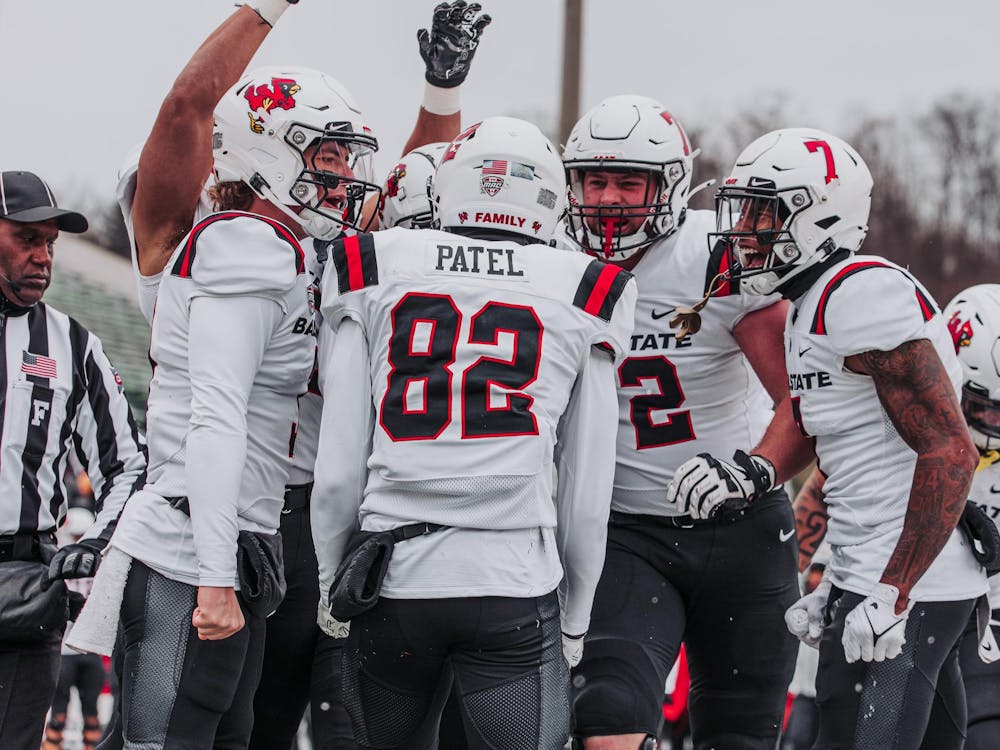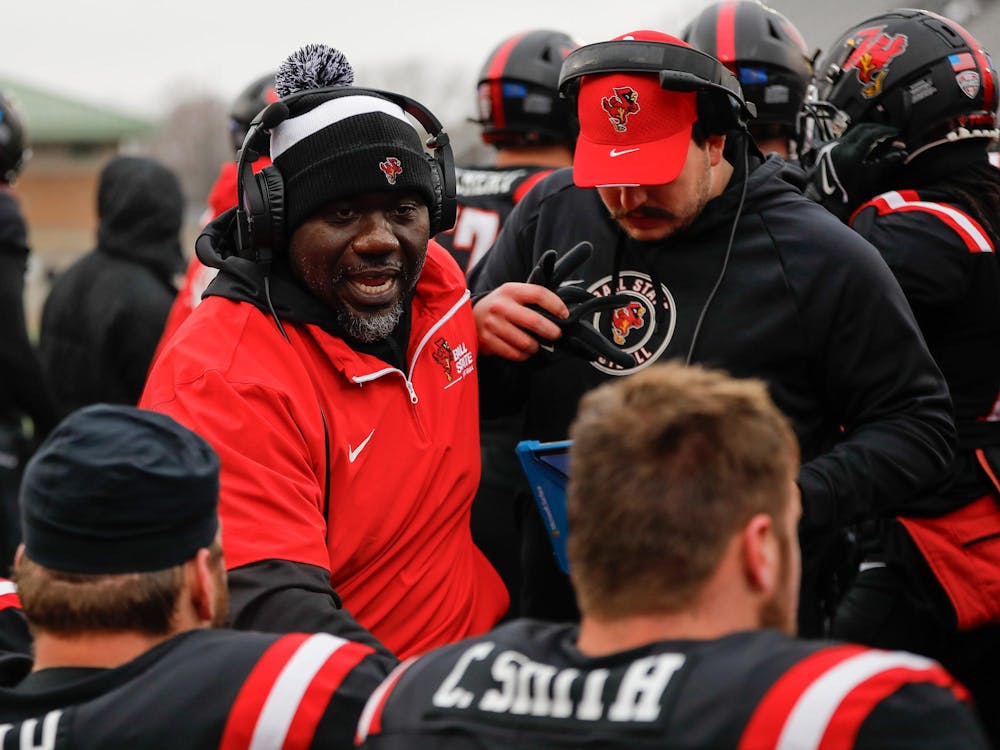When 2014 College of Architecture and Planning (CAP) alumna Maya Bird-Murphy didn’t see any other Black students in her 2014 CAP class, she said she realized the field — in and outside of school — lacked diversity in both students and employees concentrated in architecture.
In the classroom, she said she experienced “many uncomfortable moments with professors and other classmates.” The “culture shock” led to Bird-Murphy asking herself how she could change and diversify the world of architecture. In the 2014-15 school year, Bird-Murphy’s graduating year, there were 1,193 Black undergraduate students enrolled in Ball State out of a total of 16,415 undergraduate students.
“Just suddenly being around only white people was very strange for me, and there were definitely things that happened,” Bird-Murphy said. “It was mostly on the scale of microaggressions … I think in those situations, you kind of just need to try to conform and not shake anything up. So, I was doing that a lot, where I was just trying to get through it.”
Bird-Murphy grew up near Chicago in Oak Park, Illinois. In Oak Park, she said there was more diversity than what she saw and experienced at Ball State, which led her to a “culture shock” upon entering college.
Bird-Murphy said she looked at many different schools before choosing Ball State. One of her major deciding factors was the architecture workshops CAP held for high school students that she attended while in high school. These camps are week-long professional workshops that give students an opportunity to explore different architecture fields and hear from professionals.
“It was like the first look into what an architecture studio was going to be like,” Bird-Murphy said. “It didn't feel like working to me, so I knew that I really loved doing that.”
While attending Ball State, Bird-Murphy went on two architecture study abroad trips, allowing her to graduate a semester early. She traveled with Ana de Brea, professor of architecture, to South American countries including Argentina, Ecuador, Peru and Brazil, as well as Spain and Portugal.
“I think [the trips] were kind of pivotal for me in trying to figure out what I wanted to do for my career,” Bird-Murphy said. “I really gelled with some professors … who were really thinking about the social side of architecture, so more architecture that cares for people and society.”
Bird-Murphy also connected and traveled with Olon Dotson, interim department chair of the Department of Architecture and professor of architecture, who she has stayed in touch with since graduating. Dotson said Bird-Murphy, as a student, was “somewhat quiet and shy … and when she had something to say, it was pretty profound.”
Dotson created the social and environmental justice minor and graduate certificate after Bird-Murphy graduated, but he said Bird-Murphy was one of his students who explored those topics with him.
“She traveled to Detroit and joined me on a couple of my excursions up there with students, even after she left Ball State, and saw some of the movements that were going on there,” Dotson said.
Bird-Murphy’s experiences on those excursions further inspired her to make a change in the world of architecture.
“I actually went back to get my master’s of architecture and started to really think about why [architecture lacked diversity] and if I could do anything about it,” Bird-Murphy said. “I felt like I had to represent my race a lot, which is uncomfortable, and we were not really learning about designers of color.”
When she began her master’s degree thesis at Boston Architectural College, Bird-Murphy also unknowingly began what exists today as Chicago Mobile Makers, a nonprofit aiming to encourage youth to advocate for change in their communities and become “change-makers” through design-focused, skill-building workshops.
While studying for her master’s, Bird-Murphy was also working at a firm where she “was one of the only people of color.” Her time at the firm, along with her experiences in higher education, inspired her to further work and develop her thesis on improving diversity in the architecture field, as well as help low-income neighborhoods through architecture.
After graduating from Boston Architectural College in 2017, Bird-Murphy immediately began working on turning her thesis into a business. At around the age of 24, she was learning the entrepreneurial side of her nonprofit.
That same year, Bird-Murphy launched Chicago Mobile Makers. Because of her thesis, Bird-Murphy said, she was able “to really sit-down [and] think about how [she] personally wanted to address the problems that [she] was seeing.”
“A lot of people don't even necessarily know what an architect is, so why would they ever think about doing that as their career?” Bird-Murphy said. “That's why we go around to different neighborhoods and try to make it as accessible as possible to get this education.”
Chicago Mobile Makers hosts pop-up events, which it promotes via its website and social media platforms. During these events, its staff of four people, including Bird-Murphy, visit a neighborhood or public area for a few hours with its truck, which the company purchased in 2019. At these events, Chicago Mobile Makers introduces children to different architectural design elements.
The truck, a retired United States Postal Service delivery truck, was what helped Chicago Mobile Makers thrive once the pandemic hit, Bird-Murphy said. Before COVID-19, Chicago Mobile Makers went into schools for activities. The truck allowed staff to do their activities outdoors, which gave them a busy summer and jumpstarted their best year in 2020.
Because of Chicago Mobile Makers’ public outreach with the truck, more donations came in, and it was able to partner with other organizations. Chicago Mobile Makers partnered with Instagram for consulting last year, which Bird-Murphy said she hopes to do again.
Chicago Mobile Makers also hosts longer weekly programs that people pre-register for. The longer programs, which can be up to six months long, allow children to explore architectural design in-depth and come away with a deeper understanding of architecture.
“We'll have a group of kids that are mostly from the same place, or maybe it's in a school where everybody's coming from around the same area, and we look at an underutilized area in that neighborhood,” Bird-Murphy said. “The kids actually get to design their positive change for that place.”
Chicago Mobile Makers plans to expand its operations to Boston this spring and is partnering with Boston Architectural College to bring design programs to children in and around the city, according to the Mobile Makers website.
Contact Hannah Amos with comments at hannah.amos@bsu.edu or on Twitter @Hannah_Amos_394.





